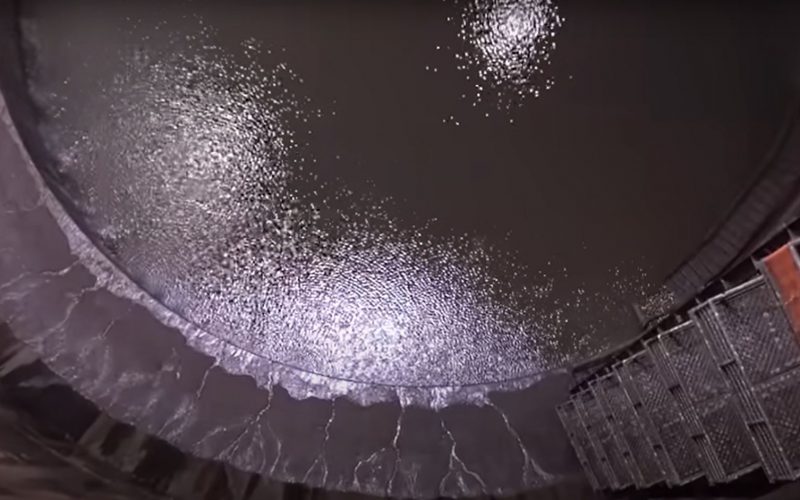
The Tokyo-based underground flood defense system, the Metropolitan Outer Area Underground Discharge Channel, is a monumental engineering project designed to protect the city from extreme rainfall and flooding, which have become more common due to climate change. Known as the “cathedral” because of its vast, cavernous structure, it consists of large tunnels and silos that divert excess water from rivers and rainstorms.
Tokyo has a huge underground cavern to help the Japanese capital deal with expected increases in rainfall, part of the city's plan to deal with changing climate https://t.co/sDobNeCuo8
— Reuters (@Reuters) October 3, 2024
The system, completed in 2006, has already prevented numerous flood disasters, saving billions in damages, and continues to be enhanced to handle more frequent and intense rain events.
Addressing Climate Change and Flood Risks
Tokyo has long faced the threat of floods due to its geography and dense urban infrastructure. As global temperatures rise, storms grow more severe, resulting in unpredictable and intense “guerrilla rainstorms”. These short, powerful storms can quickly overwhelm drainage systems, which prompted Tokyo to develop this massive underground network.
Design and Functionality
The channel, located beneath the northern suburbs, is an architectural marvel. It is equipped with five large silos, each about 70 meters deep, and a network of underground tunnels stretching 6.3 kilometers. These structures act like storage tanks, temporarily holding millions of cubic meters of water until it can be safely pumped out into the Edo River. The tunnels are linked to various rivers and drainage systems, efficiently diverting rainwater and floodwaters during extreme weather events.
The Metropolitan Outer Area Underground Discharge Channel in Tokyo can store up to 670,000 cubic meters of water at a time.
Future Enhancements for Growing Challenges
As climate change progresses, Tokyo’s flood management systems face increased pressure. The city continues to invest in strengthening its defenses. For instance, projects to reinforce levees and upgrade drainage infrastructure are ongoing, with a recent 37.3 billion yen initiative aimed at ensuring the city remains resilient against future weather patterns.
With this proactive approach, Tokyo is positioning itself as a global model for urban flood management in the face of climate change, using both technological innovation and engineering to protect its citizens and economy from rising environmental risks.
And in the Rest of the World?
There are other massive underground flood control systems around the world, though Tokyo’s is one of the largest. For example:
- The SMART Tunnel (Malaysia): Kuala Lumpur’s Stormwater Management and Road Tunnel is a dual-purpose system. It acts as a stormwater channel during heavy rain while also serving as a roadway for traffic under normal conditions.
- The Thames Barrier (UK): While not underground, this flood control structure across the River Thames in London is a vital system protecting the city from tidal surges and rising sea levels.
- Cheonggyecheon Stream Restoration (South Korea): This urban renewal project includes an underground water management system in Seoul, diverting rainwater to prevent flooding while integrating a public park into the city’s landscape.
Turkey does have significant flood control infrastructure, but nothing on the scale of Tokyo’s underground flood tunnels. However, Istanbul has implemented various projects to manage flood risks, especially after severe floods in 2009. The city has improved drainage systems and constructed underground reservoirs to store excess water during heavy rainfall.
Additionally, the Turkish government continues to invest in water management and flood defense systems to protect urban areas from increasing climate-related risks, focusing on both modernizing infrastructure and natural water retention strategies in cities like Istanbul and Ankara.
